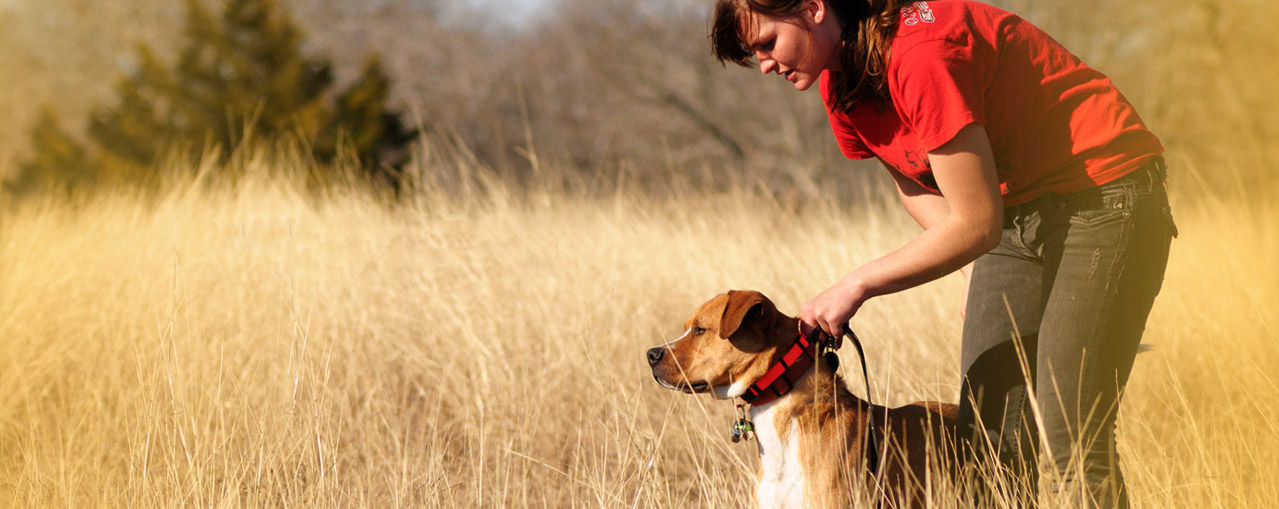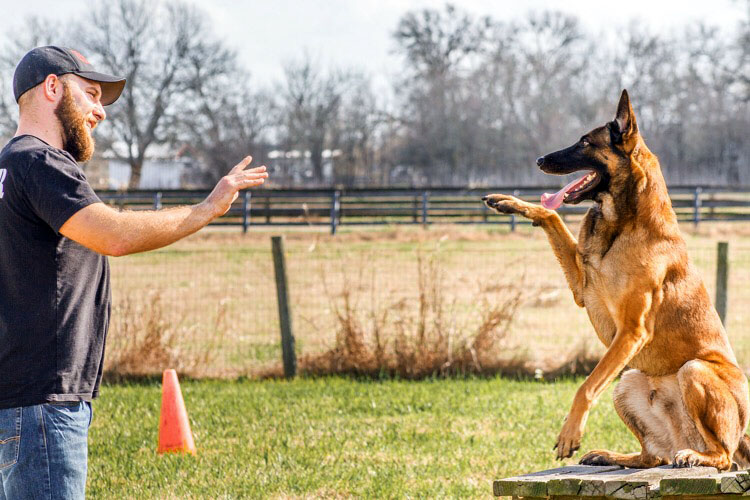Dog Training Techniques to Help Manage Aggressive Behavior in Dogs
Dog Training Techniques to Help Manage Aggressive Behavior in Dogs
Blog Article
Newbie's Guide to Successful Canine Training in the house
Effectively training a pet dog at home needs a nuanced understanding of canine behavior and reliable interaction techniques. Developing clear training goals, making use of high-quality incentives, and preserving uniformity across household participants are vital elements. Integrating training right into daily routines can enhance both interaction and retention.
Comprehending Dog Habits
Understanding pet habits is crucial for reliable training and fostering a harmonious partnership in between people and their canine companions. Canines connect primarily with body movement, articulations, and facial expressions, making it vital for owners to interpret these signals properly. Recognizing habits such as tail wagging, roaring, or shrinking can supply insights into a pet dog's emotion and intentions.

Typical behavioral concerns, such as aggression, anxiousness, or extreme barking, frequently originate from misunderstandings or unmet demands. Observing and dealing with these problems without delay can avoid rise and make sure a favorable training experience. By cultivating a deep understanding of dog behavior, proprietors can customize their training approaches to match their canine buddies, eventually bring about a well-behaved and pleased pet.
Crucial Training Tools
A well-equipped training room can substantially enhance the efficiency of canine training at home. Essential training tools guarantee that both the instructor and the pet can participate in efficient sessions that cultivate discovering and bonding.

Buying a sturdy chain and a comfortable, well-fitting collar or harness is essential for security and control. These tools aid establish boundaries and ensure the canine stays safe during training. Additionally, an assigned training location, devoid of distractions, help focus for both the trainer and the canine.
Educating aids such as training pads, cones, or agility equipment can also improve the experience by introducing selection and obstacles. Having a notebook or digital app for tracking progression can be indispensable, permitting you to note successes and locations for enhancement. Utilizing these vital devices will produce a positive training atmosphere and lay the foundation for reliable discovering.
Producing a Training Routine
Developing a consistent training regimen is essential for efficient pet training at home. A well-structured routine not only aids in reinforcing preferred behaviors but also supplies your pet with a sense of safety and security and predictability. To produce an efficient training regular, begin by identifying certain training goals, such as standard commands, chain walking, or house-breaking.
Select a designated time every day for training sessions, preferably when your dog is receptive and alert. Sessions ought to be brief, roughly 5 to 15 mins, to maintain emphasis and prevent tiredness. Uniformity in timing and environment will improve your pet's learning experience.
Integrate training into daily activities to reinforce skills. For instance, method commands throughout walks or mealtime, which integrates finding out right into all-natural regimens. Additionally, stay adaptable and change here the routine as essential, accommodating your pet's power degrees and state of mind.
Favorable Support Methods
Positive reinforcement strategies are basic to efficient pet dog training, promoting preferred habits with rewards instead of punishment. This technique utilizes favorable stimulations, such as treats, appreciation, or play, to urge pets to duplicate certain activities. The cornerstone of this technique is timing; benefits should be offered quickly following the wanted actions to create a clear organization.
When executing positive reinforcement, it is vital to choose incentives that are inspiring for your canine. High-value deals with, such as little items of hen or cheese, can be specifically effective throughout training sessions. Furthermore, varying the rewards can maintain your canine's interest and interest.
Start with basic commands, like "sit" or "remain," and gradually progression to much more complicated jobs. Consistency is crucial; make certain that all member of the family utilize the very same commands and benefit systems to stay clear of complication.
In addition, it is important to remain client and avoid irritation. Canines, like humans, find out at their very own speed. By fostering a supportive training setting with favorable support, you can improve your pet's knowing experience while strengthening directory the bond between you and your furry buddy, laying the groundwork for successful training results.
Common Educating Difficulties
While training a canine in your home can be a gratifying experience, it typically features a collection of usual challenges that can check both patience and uniformity. One common issue is distraction. Dogs might end up being quickly averted by noises, movements, or even scents in their setting, making it hard to maintain their focus throughout training sessions.
One more challenge is inconsistency in commands and support. It can hinder and perplex the pet development if family members use different hints or rewards. Developing a unified technique is important for efficient interaction.
In addition, pets can experience frustration or stress and anxiety, especially if they do not understand what is expected of them. This can lead to unwanted actions, such as eating or barking.
Ultimately, the timing of reinforcement is vital (Dog training). Postponed rewards can decrease the efficiency of favorable reinforcement, as dogs may stop working to attach the habits with the incentive
Conquering these challenges needs dedication, clear communication, and a structured training strategy. Acknowledging and addressing these usual obstacles will lead the way for a more delightful and successful training experience in the house.
Final Thought
Finally, successful canine training at home requires a detailed understanding of canine habits and effective interaction methods. By establishing clear training goals and making use of premium deals with alongside favorable support, the training procedure comes to be a lot more satisfying for both the pet and the fitness instructor. Persistence, flexibility, and consistency are necessary components that promote knowing. Eventually, integrating training right into day-to-day routines enhances the bond between dog and proprietor, making the experience both effective and delightful.
Establishing a consistent training routine is crucial for reliable pet dog training at home.Positive reinforcement methods are fundamental to efficient canine training, advertising wanted habits via benefits instead than punishment (Dog training). By promoting a supportive training setting through favorable reinforcement, you can improve your dog's discovering experience while enhancing the bond between you and web link your furry companion, laying the foundation for effective training results
In final thought, successful canine training at home necessitates a detailed understanding of canine habits and reliable interaction strategies. By developing clear training goals and utilizing high-quality deals with along with favorable support, the training procedure becomes a lot more gratifying for both the instructor and the pet dog.
Report this page